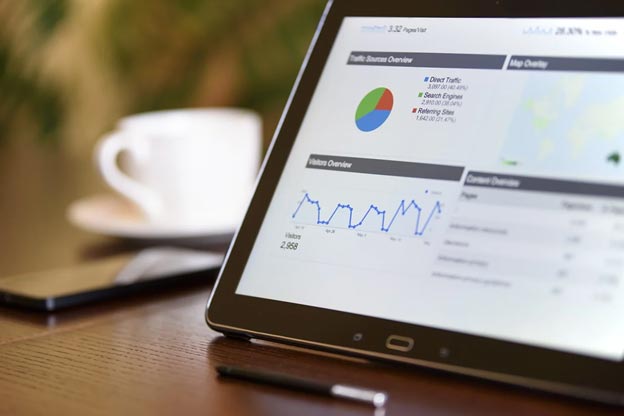How To Build a Marketing Campaign For Your New Online Store in 2021
Having an ecommerce website, you are probably aware that building a digital marketing strategy is very important for sales. However, the term “marketing strategy” is complex, as the industry itself is now.

Here are the most important elements you must work on to get maximum profit from your marketing efforts.
Writing a Blog
A lot of ecommerce store owners have tried to establish a blog, only to give up on it a few months later. This is usually because of unrealistic expectations and the idea of success before commitment.
Other ecommerce store owners might commit and drive to succeed but lack the ideas on what to blog about and how the blog and the ecommerce store play together.
Find Strong Communities for Your Products
Part of blogging is to establish a following, a tribe, a community. Most products already have a huge community. Let’s take an online bike store as an example. They sell both mountain bikes and road bikes. Each “category” has its community already, so the bike shop could blog about lots of interesting topics related to mountain biking:
- How to ride up a steep hill
- How to ride safely
- How to clean your bike
And for road bikes:
- How to climb Alpe d’Huez
- How to achieve optimal gear shifts
- How to decrease your bike’s weight
Also, if you can find a niche for your products, target that niche. It is much easier for your blog to succeed if you target a smaller niche, rather than a wide segment.
Teach, but Don’t Self-Promote
Part of blogging is to establish a following, a tribe, a community.
Your blog should be educational for your readers. So, getting back to our bike store, you should not blog about the brand-new Trek mountain bike and why anyone should buy it, and never write they should buy from you! Don’t self-promote.
Instead, write your blog post for the general audience of mountain bikers, so anyone with a mountain bike can follow your blog. The interesting part happens when people who would like to have a mountain bike start reading about your wonderful tips and decide to buy one. Which online bike store would they go to first? Yours, of course.
You should skip the sales approach and out-teach your competition instead of trying to out-spend them.
Write “How To” Posts That Include Several Products
When writing a blog post about how to clean your mountain bike after returning from a trail, make sure to include a couple of products the reader can use to better clean the bike. Find products that complement the bike. There might be some great tools to use when cleaning the chain, brakes, and gear-parts.
After cleaning the bike, should you add some rust proofing material? What about the brakes? The chain?
Anything that makes the reader feel they’re taking better care of their bike will work, because your tips will benefit them. This builds trust and establishes you as an expert in this niche.
Blog About Events in Your Niche
This is a hugely underestimated tactic for blogging. Whenever something big happens in your industry, you need to get some content out there to target people following the big event/news. Your chances of getting lots of traffic are quite good. Try to search for iPhone 13 in Google. You’ll find dedicated blogs that even have iPhone13 in their domain name.
This is a good example of arriving early to the party. They know that an iPhone 13 will be released sooner or later, so why not jump on the band wagon? Again, getting back to our bike store, you want to blog about events going on in your niche. The Tour de France, Giro’d Italia, and Vuelta an España are obvious events to blog about. People follow those races all over the world. You could write about lots of related things, such as:
- How they prepare for the Tour
- What they eat before and during the Tour
- The equipment they use and what it costs
Connect Your Blog with Social Media Platforms
Don’t make your blog a separate island. Build bridges from your blog to the rest of your marketing efforts, such as Facebook, Twitter and email marketing.
Specifically, this means you should:
- Have a sign-up form to your email list on your blog
- Tell your email subscribers about your best blog posts
- Have a Facebook Page box on your blog
- Post new blog posts on your Facebook Page’s wall
- Have a Twitter Stream widget on your blog
- Post new blog posts to Twitter
Remember, if you want to start a blog to drive traffic to your ecommerce store – be patient, consistent and don’t give in a month later because you’re disappointed. Commit to making your blog a success as it takes a lot of time and energy, so stick with it!
Work on Your SEO
Creating a website is one thing, surviving in the global online market is another. How many internet users will find your website from the millions of websites on the internet? This is a vital question that website owners need to think about after creating a new website.
The best way of attracting visitors to your website is to get listed on various search engines. Being listed in the search engines’ Top 10 results will boost your business, since visitors don’t have the time to go through thousands of sites listed in the search engine. It is, therefore, important to get a top ranking for your website.
The following are SEO tactics that can help boost your rankings in the search engine.

Quality Content
Your website content plays a crucial role in attaining top ranking. You can order high-quality texts from an college essay writing service to be sure your content is worthy. On the other hand, it can also cause site ranking to fall if it is poor quality or contains copied content from existing websites. Your website content should be interesting and unique so that users are attracted to visiting your pages.
Proper Keyword Selection
While selecting keywords for your website, examine keywords as if you are a web user. Which keywords are most likely to be used by someone searching for your web content? This is an important question to think through. Initially, it is wiser to use general keywords rather than specific keywords. You could use your product details, company name, or location as a keyword.
Link Popularity
It is not easy to get a good ranking for your site without quality backlinks. Therefore, link popularity plays a vital role in a website’s ranking. You should always focus on getting one-way links or quality natural links from relevant sites with a higher page rank.
Competitor Analysis
All websites listed in the search engine would want their web pages to be highly ranked. Therefore, you should always keep track of your competitors’ activities. If you want a top ranking, analyse what you need to do and who you should compete with. When it comes to promoting your site, you should always strive to outdo your competition. If you lack the time to promote your website, you could hire a qualified SEO service provider.
Work on Website's Usability and Design
Before you start to create the content itself, whether it is content on product pages, category pages, or information pages, you need a set of Website Templates for you to use.
These templates have various details, e.g. the number of columns, the sidebar’s content, and different navigation menus. You need a template for each of them.
A landing page for an email campaign might perform better if you go for a simple one column template without all the navigation menus to remove clutter and focus on the message you’re trying to get across with the campaign.
Your product pages are different. Here it makes sense to list the categories in a sidebar to help the user navigate other categories and find what they need. In your checkout flow, the user’s aim is no longer to find more products, but to buy those they’ve already found. Then the categories list in the sidebar should be removed. You might get rid of the sidebar entirely and focus on getting the sale done.
Home Page
Obviously, any site has a home page, and the one in your store should be organised properly.
Your homepage must show the way to specific categories when a new visitor arrives. Your top categories should be present on the home page as well. You need to guide visitors of your home page through to the products you want to sell. Home page visitors are often just killing time, maybe looking for a new bike, but doing nothing in particular. This is your chance to tell them what they need!
Remember that loads of visitors will never see your homepage. Users often go directly to product pages from search engines, and that’s a good thing since they’re probably closer to making a decision.
Category Page
Since the home page is showing users the way, you need the room the door leads to. That can be your category pages, yet a category page is a tricky thing. Most ecommerce platforms display the category page as a list of products, and nothing else. This should not be the case for your ecommerce site, since visitors who browse your site should get more value from a page they often see than just a list of products:
- Summarise your category with images
- Use bullet points (Unique Selling Points)
- Imbed videos
- Display a featured product
- Show products on discount
- Make it easy to scan the page to see what this category contains immediately.
Don’t forget to socialise – this is a great place to have a Facebook Like button, a Twitter button, and any other social media buttons.
Product Page
The product page is where all the magic happens. Ultimately, to buy something, any user must go through this page (in most situations).
It is extremely important that your product page presents your products in the best light. Images are a must, and video is sometimes even better. Relevant information must be provided – such as price, SKU, whether the product is in stock, delivery information, product specifications – the list goes on.
Don’t make the mistake of just copying the description the manufacturer provides on their website, since this could give search engines an indication of duplicate content. Write your own description instead.
Last but not least, the “add to cart” button must be placed in a proper page section, be sized appropriately, and grab attention with its colour and call to action.
Shopping Cart
While visiting an ecommerce site, users must be able to add products to their cart – just like they do in any regular store. What you should decide on is how you want your shopping cart delivered to the user. Should it even be named a “Shopping cart” in the first place? Are you better off with a “Shopping bag”?
How should it look then? Knowing your customers is important, so do think of them as you decide on its appearance.

Checkout Flow
As an ecommerce site, you need a checkout flow just like any other store.
This is another very important step to get right. Think about how you can guide your visitors through the process easily.
- Is it too complicated to do in one step?
- Is this a place for you to up-sell?
- Which payment methods do you want (or need) to accept?
- Should the visitor be able to edit the cart while checking out?
The answers to these questions depend on what you’re selling and who you’re targeting. How internet savvy are your customers? Take a look at the demographics, and design something that caters to their feelings and emotions. Take their side and make them take yours!
A Thank You Page
Many site owners often forget about this page. This is the page your customers will see right after they’ve placed an order with you. And when they’ve just done that, they’re in a state of mind where they are satisfied and trust you, and they look forward to receiving whatever they just bought. Therefore, you have a much better chance to make them sign up for your newsletter, follow you on Twitter, or like you on Facebook.
Think about yourself and think back to the latest purchase you made online. Wouldn’t it be very likely that you’d take another action after completing a purchase if you were asked for it?
E-mail Design
When you’ve got all the design elements on your website nailed down, don’t forget the look and feel of your emails.
You should be sending emails that instantly display similarities with your site or product, so the recipients will know an email is from you.
It should be a simple one column layout with your logo at the top, and don’t forget to use the same color scheme that your site has.
The Bottom Line
If you’re trying to get maximum profit from your marketing efforts, it’s high time to pay attention to the essential details you might have missed before. Blog content, SEO optimisation, and site’s usability are three elephants that hold your micro ecommerce world together, so make sure it doesn’t fall apart by using the tips mentioned above. In the long run, your strategy will bring results in the form of decent income.
